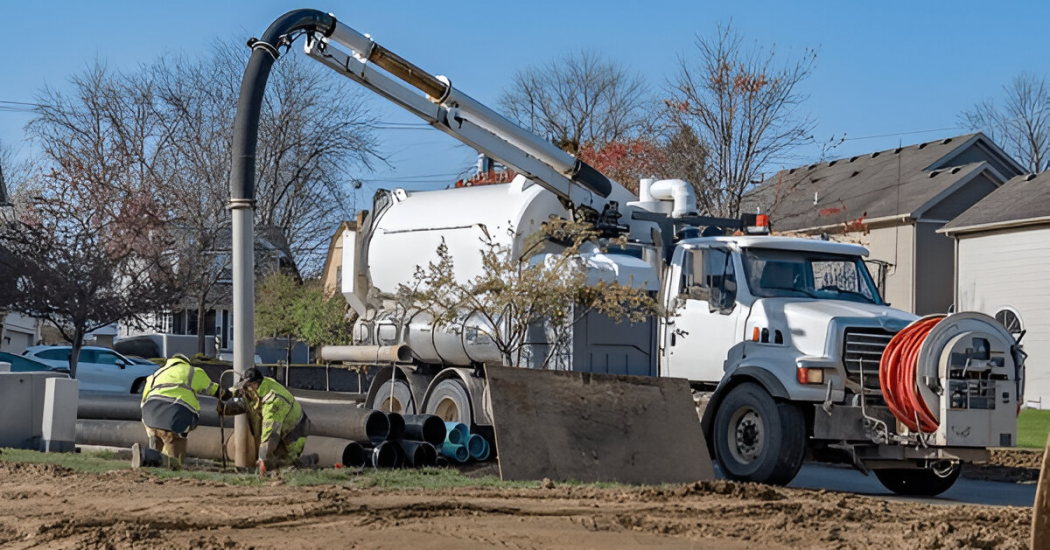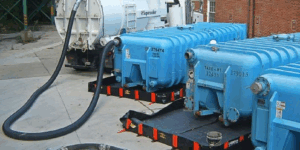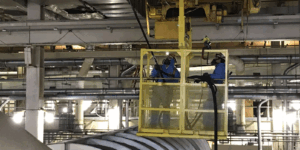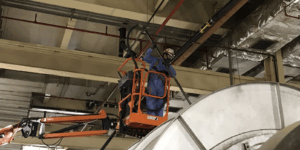Introduction
Excavation is an essential process in various industries, from construction and utilities to landscaping and environmental management. Choosing the right excavation method is crucial for ensuring efficiency, safety, and cost-effectiveness. Hydro-excavation and traditional digging are two widely used methods, each with its own set of advantages and limitations.
This guide compares hydro-excavation and traditional digging, focusing on cost, safety, and practical applications. By understanding the differences between these methods, you can make informed decisions for your next project and avoid potential pitfalls.
What is Hydro-Excavation?
How It Works
Hydro-excavation is a non-destructive excavation method that uses pressurized water to break up soil, which is then removed with a high-powered vacuum. This precise technique allows operators to target specific areas without damaging underground utilities or nearby structures.
The process involves:
Pressurized Water Application: Water jets loosen the soil, reducing the need for manual labor or heavy equipment.
Vacuum Extraction: A vacuum system removes the displaced soil and stores it in a debris tank for disposal.
Site Cleanup: The worksite is left clean, with minimal environmental impact.
Hydro-excavation is increasingly favored for its precision and adaptability to sensitive projects. This method eliminates the risks associated with mechanical tools, such as accidental strikes on underground utilities or excessive soil disruption.
Key Advantages
Hydro-excavation offers several benefits, including:
Precision: Ideal for locating utilities without causing damage. This precision minimizes the need for repairs and ensures project timelines stay on track.
Reduced Risk: Minimizes the likelihood of accidents or utility strikes, which can be costly and dangerous.
Adaptability: Suitable for frozen ground, tight spaces, and urban areas. The ability to work in various environments makes hydro-excavation a versatile option.
Environmental Friendliness: Generates less disruption to the surrounding environment compared to traditional methods. The reduced debris and targeted excavation help preserve nearby ecosystems.
Hydro-excavation has become the go-to method for projects where accuracy and safety are paramount, especially in urban or densely populated areas.
What is Traditional Digging?
Tools and Equipment Used
Traditional digging relies on manual labor, shovels, and heavy machinery such as backhoes and excavators to remove soil. This method is widely used for large-scale excavation projects and in areas with minimal underground utilities.
Operators use equipment to remove significant amounts of earth, creating trenches or clearing spaces for construction. While effective for straightforward tasks, traditional digging often requires additional effort to address cleanup and site restoration.
Challenges with Traditional Methods
Utility Damage: Higher risk of striking underground utilities, leading to costly repairs and safety hazards. Accidental damage to gas lines, water pipes, or electrical conduits can cause significant project delays.
Labor Intensive: Requires more manpower, increasing time and cost. The reliance on manual labor also raises the potential for workplace injuries.
Environmental Impact: Greater soil disruption and debris generation compared to hydro-excavation. This can lead to long-term effects on local ecosystems.
Precision Limitations: Difficult to target specific areas without over-excavation. This lack of accuracy often results in unnecessary disruption and additional restoration work.
Traditional digging remains a viable option for projects without complex utility networks or when cost is the primary concern. However, its limitations make it less suitable for sensitive or high-risk environments.
Comparing Hydro-Excavation and Traditional Digging
Cost Analysis
Hydro-Excavation: The upfront cost of hydro-excavation is higher due to the specialized equipment and skilled operators required. However, these initial costs are often offset by long-term savings. Reduced risk of utility damage, faster project completion, and minimal cleanup expenses contribute to hydro-excavation’s overall cost-efficiency.
Traditional Digging: While traditional digging has lower initial costs, unexpected expenses can arise from utility strikes, prolonged project timelines, and additional labor requirements. Repairing damaged utilities or addressing environmental concerns can significantly inflate the total cost.
When evaluating costs, it’s essential to consider the project’s complexity and potential risks. For projects requiring precision and safety, hydro-excavation offers better value despite its higher upfront cost.
Safety and Environmental Considerations
Hydro-Excavation: Significantly safer, with less risk of accidents or environmental disruption. This method prevents damage to underground utilities, reducing the likelihood of workplace injuries and project delays. Additionally, the controlled nature of hydro-excavation minimizes soil displacement and debris, protecting nearby ecosystems.
Traditional Digging: Higher safety risks due to potential equipment-related accidents and utility strikes. The extensive soil disruption caused by traditional digging can lead to erosion and habitat destruction, requiring additional restoration efforts.
Hydro-excavation’s focus on safety and environmental protection makes it a preferred choice for projects in sensitive areas or those requiring regulatory compliance.
Efficiency and Precision
Hydro-Excavation: Offers unmatched accuracy, reducing the need for rework and minimizing disruption to surrounding areas. The targeted nature of hydro-excavation allows for efficient utility exposure and precise soil removal, ensuring projects are completed on schedule.
Traditional Digging: Effective for large-scale projects but less precise, often requiring additional cleanup and repairs. The broader scope of traditional digging can lead to inefficiencies, especially in projects requiring detailed excavation.
For tasks such as pipeline installation, utility exposure, or work in urban environments, the precision of hydro-excavation provides a distinct advantage.
Best Use Cases for Each Method
Hydro-Excavation
Hydro-excavation is the preferred choice for:
Utility Exposure: Safely uncovering gas lines, water pipes, and electrical conduits. The precision of hydro-excavation ensures utilities remain undamaged.
Urban Projects: Navigating tight spaces without damaging surrounding infrastructure. The adaptability of hydro-excavation makes it ideal for congested areas.
Frozen Ground: Using heated water to excavate in winter conditions. This capability allows for year-round project execution, even in challenging weather.
Environmentally Sensitive Areas: Minimizing soil disruption and preserving ecosystems during excavation.
This method excels in projects where safety, precision, and environmental protection are priorities, making it indispensable for modern infrastructure development.
Traditional Digging
Traditional digging remains effective for:
Large-Scale Excavation: Removing large volumes of soil for building foundations or landscaping. The efficiency of heavy machinery makes traditional digging suitable for extensive projects.
Unrestricted Areas: Projects in open spaces without underground utilities. The lack of complex utility networks reduces the risk of damage.
Cost-Sensitive Tasks: Basic excavation needs with minimal complexity. Traditional methods provide a practical solution for straightforward tasks where precision is not critical.
For expansive or low-risk excavation projects, traditional digging offers a practical and cost-efficient approach.
FAQ's
Hydro-excavation uses pressurized water to break up soil gently, avoiding the direct contact with underground utilities that occurs with mechanical tools. This reduces the risk of strikes and costly repairs.
Yes, hydro-excavation is effective in various soil conditions, including clay, sand, and frozen ground. Specialized equipment ensures adaptability to different environments, making it a versatile choice for diverse projects.
Traditional digging is generally faster for large, unrestricted areas. However, hydro-excavation offers greater speed and efficiency for projects requiring precision or work in sensitive areas.
While hydro-excavation has higher initial costs, it often results in long-term savings due to reduced risk, faster completion, and lower cleanup expenses. Traditional digging may appear cheaper upfront but can incur hidden costs from utility damage and extended timelines.
Yes, hydro-excavation is highly suitable for environmentally sensitive areas, as it minimizes soil disruption and prevents damage to surrounding ecosystems. This method aligns with sustainable construction practices and regulatory requirements.
Conclusion
Choosing between hydro-excavation and traditional digging depends on the project’s specific requirements, including precision, safety, cost, and environmental considerations. While traditional digging remains useful for straightforward tasks, hydro-excavation provides unparalleled accuracy and reduced risks for complex projects.
For modern infrastructure and utility projects, hydro-excavation offers a forward-thinking solution that balances efficiency with environmental responsibility.







